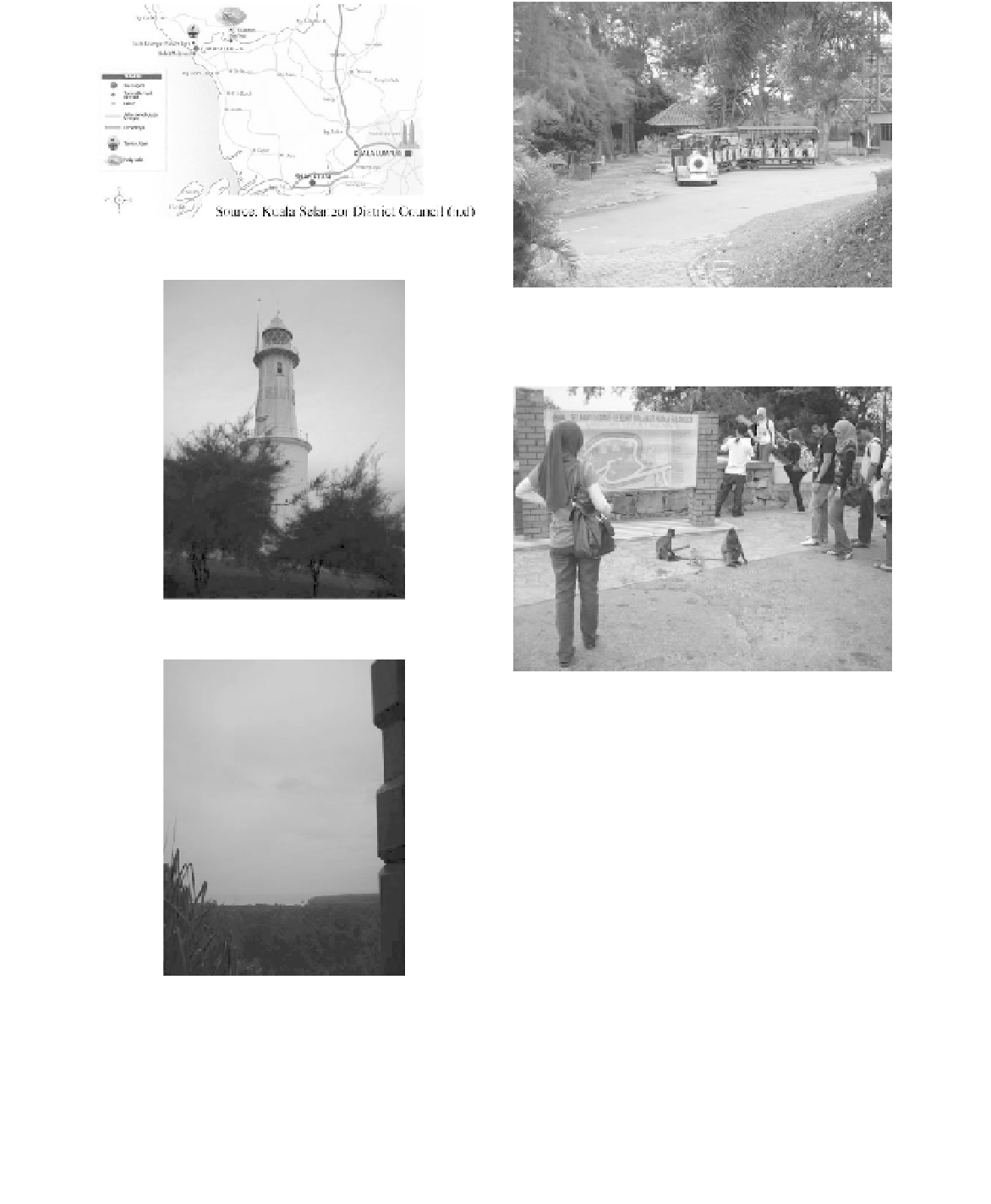Travel Reference
In-Depth Information
Figure 1.
The location of Bukit Melawati.
Figure 4.
The tram ferrying visitors up and down the
hill.
Figure 2.
The lighthouse at the top of the hill.
Figure 5.
The crowd in Bukit Melawati on weekend.
3 BACKGROUND LITERATURE
Orbasly (2000) highlighted that tourism is “a
unique economic opportunity” and causes signifi-
cant lifestyle change among the local communities.
Besides economic and cultural dynamism, tourism
in heritage areas also involves appreciation, pres-
ervation and conservation of the various elements
or features.
Heritage, as derived from the word inheritance
is defined in Oxford Dictionary as 'that which
has been or may be inherited'. According to Mil-
lar (1989), heritage is about a special sense of
belonging and of continuity that is different for
each person. Akagawa and Sirisrisak (2008: 177)
quoted the definition from the UNESCO World
Heritage Center as “our legacy from the past,
what we live with today, and what we pass on to
the future generations…” Similarly, Chapman
(2004) stated that heritage is everything that we
inherit from the earlier generations. McKercher
Figure 3.
View of the Straits of Malacca.
Long Tail Macaques
- which roam freely on the
heritage hill. Many take the opportunity to feed
these monkeys. Visitors to Bukit Melawati are
not allowed to drive their cars on weekends and
holidays. Kuala Selangor District Council operates
trams to bring visitors up and down the hill and to
the nearby nature reserve called
Taman Alam
.




Search WWH ::

Custom Search